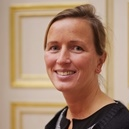Smart Hydrogels for (Bio)printing Applications
A special issue of Materials (ISSN 1996-1944). This special issue belongs to the section "Biomaterials".
Deadline for manuscript submissions: closed (31 July 2016) | Viewed by 41406
Special Issue Editors
Interests: hydrogels; polyesters; 3D printing; surface modification; biomedical applications of polymers
Interests: hydrogels; 3D printing; electrospinning; two-photon polymerization; proteins; polysaccharides; tissue engineering; hydrogel functionalization
Special Issues, Collections and Topics in MDPI journals
Special Issue Information
Dear Colleagues,
Hydrogels represent a paramount biomaterial class. As they retain large amounts of water, they are potential key candidates as extra-cellular matrix mimics, with the final aim to enhance the quality of human life.
Hydrogels have been investigated for a long time and encompass synthetic polymers, biopolymers or combinations of both as building blocks. In recent years, hydrogels have successfully been taken to the next level, as various 3D (bio)printing technologies have emerged with or without embedded cells.
In the current Special Issue of Materials, we offer a platform for the above-described ground breaking science. We hope that the issue will bring new insights to the scientific community in an ever-expanding research field.
Peter Dubruel
Sandra Van Vlierberghe
Guest Editors
Manuscript Submission Information
Manuscripts should be submitted online at www.mdpi.com by registering and logging in to this website. Once you are registered, click here to go to the submission form. Manuscripts can be submitted until the deadline. All submissions that pass pre-check are peer-reviewed. Accepted papers will be published continuously in the journal (as soon as accepted) and will be listed together on the special issue website. Research articles, review articles as well as short communications are invited. For planned papers, a title and short abstract (about 100 words) can be sent to the Editorial Office for announcement on this website.
Submitted manuscripts should not have been published previously, nor be under consideration for publication elsewhere (except conference proceedings papers). All manuscripts are thoroughly refereed through a single-blind peer-review process. A guide for authors and other relevant information for submission of manuscripts is available on the Instructions for Authors page. Materials is an international peer-reviewed open access semimonthly journal published by MDPI.
Please visit the Instructions for Authors page before submitting a manuscript. The Article Processing Charge (APC) for publication in this open access journal is 2600 CHF (Swiss Francs). Submitted papers should be well formatted and use good English. Authors may use MDPI's English editing service prior to publication or during author revisions.
Keywords
- hydrogel;
- biopolymer;
- (bio)printing;
- cell encapsulation;
- soft tissue regeneration.







